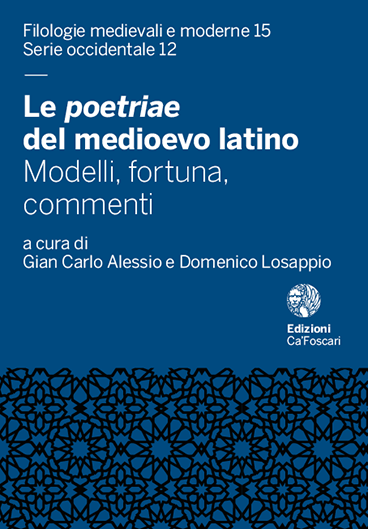Series |
Medieval and Modern Philologies
Review | The poetriae of the Latin Middle Ages
Chapter | Between Grammar and Rhetoric
Between Grammar and Rhetoric
Poetria nova and its Educational Context in Medieval and Renaissance Italy
Abstract
This paper examines the context of Geoffrey of Vinsauf’s Poetria nova and of its manuscripts and commentaries in medieval and Renaissance Italy. It is well known that, in Italy, grammar (Latin language and literature) was the concern of elementary and mainly secondary schools, whereas rhetoric was primarily a university subject (although basic introductory rhetoric also figured at the end of the secondary-school curriculum). There is little direct (and scant indirect) indication that Poetria nova was taught in Italian universities, but abundant evidence that it was used in schools. Such a school (as opposed to university) context suggests that Poetria nova was primarily used in teaching grammar, not rhetoric, in medieval and Renaissance Italy. The most important use of the text was teaching prose composition: how to vary sentences beyond the simplest wording and structure of subject-verb-predicate (suppositum-appositum) initially learned by grammar pupils, i.e. moving from ordo naturalis to ordo artificialis. Marjorie Curry Woods has written, «although there is growing evidence that the Poetria nova was used to teach the composition of prose, and especially, letters, throughout Europe, it is almost always copied with verse texts, often classical works, in Italian manuscripts, which suggests that it was also used there to teach the interpretation of literary texts». But there is little sign that Geoffrey of Vinsauf was cited in Italian literary manuscripts during the fourteenth and fifteenth centuries: in my study of manuscript schoolbooks preserved in Florentine libraries, there are 98 in which authorities are explicitly cited. Vergil tops the list, cited in 35 manuscripts, followed by Cicero (and ps. Cicero) in 32, Ovid in 29, Seneca (and ps. Seneca) in 27, Lucan in 16, Valerius Maximus in 15, Aristotle (and ps. Aristotle) in 14, Horace in 13, and so on. In contrast Geoffrey of Vinsauf was cited by name in only one manuscript.
Submitted: Sept. 15, 2017 | Published March 16, 2018 | Language: it
Keywords Rhetoric • Grammar • Geoffrey of Vinsauf • Poetria nova • Italy
Copyright © 2018 Robert Black. This is an open-access work distributed under the terms of the Creative Commons Attribution License (CC BY). The use, distribution or reproduction is permitted, provided that the original author(s) and the copyright owner(s) are credited and that the original publication is cited, in accordance with accepted academic practice. The license allows for commercial use. No use, distribution or reproduction is permitted which does not comply with these terms.
Permalink http://doi.org/10.30687/978-88-6969-137-9/003





